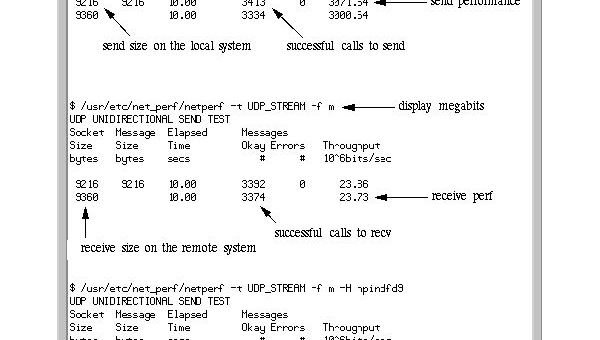引言
在高并发系统中,redis作为核心缓存组件,通常扮演着重要的"守门员"角色,有效地保护后端数据库免受流量冲击。然而,当大量缓存同时失效时,会导致请求如洪水般直接涌向数据库,造成数据库瞬间压力剧增甚至宕机,这种现象被形象地称为"缓存雪崩"。
缓存雪崩主要有两种触发场景:一是大量缓存同时到期失效;二是redis服务器宕机。无论哪种情况,后果都是请求穿透缓存层直达数据库,使系统面临崩溃风险。对于依赖缓存的高并发系统来说,缓存雪崩不仅会导致响应延迟,还可能引发连锁反应,造成整个系统的不可用。
1. 缓存过期时间随机化策略
原理
缓存雪崩最常见的诱因是大批缓存在同一时间点集中过期。通过为缓存设置随机化的过期时间,可以有效避免这种集中失效的情况,将缓存失效的压力分散到不同的时间点。
实现方法
核心思路是在基础过期时间上增加一个随机值,确保即使是同一批缓存,也会在不同时间点失效。
public class randomexpirytimecache {
private redistemplate redistemplate;
private random random = new random();
public randomexpirytimecache(redistemplate redistemplate) {
this.redistemplate = redistemplate;
}
/**
* 设置缓存值与随机过期时间
* @param key 缓存键
* @param value 缓存值
* @param basetimeseconds 基础过期时间(秒)
* @param randomrangeseconds 随机时间范围(秒)
*/
public void setwithrandomexpiry(string key, object value, long basetimeseconds, long randomrangeseconds) {
// 生成随机增量时间
long randomseconds = random.nextint((int) randomrangeseconds);
// 计算最终过期时间
long finalexpiry = basetimeseconds + randomseconds;
redistemplate.opsforvalue().set(key, value, finalexpiry, timeunit.seconds);
log.debug("set cache key: {} with expiry time: {}", key, finalexpiry);
}
/**
* 批量设置带随机过期时间的缓存
*/
public void setbatchwithrandomexpiry(map keyvaluemap, long basetimeseconds, long randomrangeseconds) {
keyvaluemap.foreach((key, value) -> setwithrandomexpiry(key, value, basetimeseconds, randomrangeseconds));
}
}
实际应用示例
@service
public class productcacheservice {
@autowired
private randomexpirytimecache randomcache;
@autowired
private productrepository productrepository;
/**
* 获取商品详情,使用随机过期时间缓存
*/
public product getproductdetail(string productid) {
string cachekey = "product:detail:" + productid;
product product = (product) redistemplate.opsforvalue().get(cachekey);
if (product == null) {
// 缓存未命中,从数据库加载
product = productrepository.findbyid(productid).orelse(null);
if (product != null) {
// 设置缓存,基础过期时间30分钟,随机范围10分钟
randomcache.setwithrandomexpiry(cachekey, product, 30 * 60, 10 * 60);
}
}
return product;
}
/**
* 缓存首页商品列表,使用随机过期时间
*/
public void cachehomepageproducts(list products) {
string cachekey = "products:homepage";
// 基础过期时间1小时,随机范围20分钟
randomcache.setwithrandomexpiry(cachekey, products, 60 * 60, 20 * 60);
}
}
优缺点分析
优点
- 实现简单,无需额外基础设施
- 有效分散缓存过期的时间点,降低瞬时数据库压力
- 对现有代码改动较小,易于集成
- 无需额外的运维成本
缺点
- 无法应对redis服务器整体宕机的情况
- 仅能缓解而非完全解决雪崩问题
- 随机过期可能导致热点数据过早失效
- 不同业务模块的过期策略需要分别设计
适用场景
- 大量同类型数据需要缓存的场景,如商品列表、文章列表等
- 系统初始化或重启后需要预加载大量缓存的情况
- 数据更新频率较低,过期时间可预测的业务
- 作为防雪崩的第一道防线,与其他策略配合使用
2. 缓存预热与定时更新
原理
缓存预热是指系统启动时,提前将热点数据加载到缓存中,而不是等待用户请求触发缓存。这样可以避免系统冷启动或重启后,大量请求直接击穿到数据库。配合定时更新机制,可以在缓存即将过期前主动刷新,避免过期导致的缓存缺失。
实现方法
通过系统启动钩子和定时任务实现缓存预热与定时更新:
@component
public class cachewarmupservice {
@autowired
private redistemplate redistemplate;
@autowired
private productrepository productrepository;
@autowired
private categoryrepository categoryrepository;
private scheduledexecutorservice scheduler = executors.newscheduledthreadpool(5);
/**
* 系统启动时执行缓存预热
*/
@postconstruct
public void warmupcacheonstartup() {
log.info("starting cache warm-up process...");
completablefuture.runasync(this::warmuphotproducts);
completablefuture.runasync(this::warmupcategories);
completablefuture.runasync(this::warmuphomepagedata);
log.info("cache warm-up tasks submitted");
}
/**
* 预热热门商品数据
*/
private void warmuphotproducts() {
try {
log.info("warming up hot products cache");
list hotproducts = productrepository.findtop100byorderbyviewcountdesc();
// 批量设置缓存,基础ttl 2小时,随机范围30分钟
map productcachemap = new hashmap<>();
hotproducts.foreach(product -> {
string key = "product:detail:" + product.getid();
productcachemap.put(key, product);
});
redistemplate.opsforvalue().multiset(productcachemap);
// 设置过期时间
productcachemap.keyset().foreach(key -> {
int randomseconds = 7200 + new random().nextint(1800);
redistemplate.expire(key, randomseconds, timeunit.seconds);
});
// 安排定时刷新,在过期前30分钟刷新
schedulerefresh("hotproducts", this::warmuphotproducts, 90, timeunit.minutes);
log.info("successfully warmed up {} hot products", hotproducts.size());
} catch (exception e) {
log.error("failed to warm up hot products cache", e);
}
}
/**
* 预热分类数据
*/
private void warmupcategories() {
// 类似实现...
}
/**
* 预热首页数据
*/
private void warmuphomepagedata() {
// 类似实现...
}
/**
* 安排定时刷新任务
*/
private void schedulerefresh(string taskname, runnable task, long delay, timeunit timeunit) {
scheduler.schedule(() -> {
log.info("executing scheduled refresh for: {}", taskname);
try {
task.run();
} catch (exception e) {
log.error("error during scheduled refresh of {}", taskname, e);
// 发生错误时,安排短期重试
scheduler.schedule(task, 5, timeunit.minutes);
}
}, delay, timeunit);
}
/**
* 应用关闭时清理资源
*/
@predestroy
public void shutdown() {
scheduler.shutdown();
}
}
优缺点分析
优点
- 有效避免系统冷启动引发的缓存雪崩
- 减少用户请求触发的缓存加载,提高响应速度
- 可以根据业务重要性分级预热,合理分配资源
- 通过定时更新延长热点数据缓存生命周期
缺点
- 预热过程可能占用系统资源,影响启动速度
- 需要识别哪些是真正的热点数据
- 定时任务可能引入额外的系统复杂度
- 预热的数据量过大可能会增加redis内存压力
适用场景
- 系统重启频率较低,启动时间不敏感的场景
- 有明确热点数据且变化不频繁的业务
- 对响应速度要求极高的核心接口
- 可预测的高流量活动前的系统准备
3. 互斥锁与分布式锁防击穿
原理
当缓存失效时,如果有大量并发请求同时发现缓存缺失并尝试重建缓存,就会造成数据库瞬间压力激增。通过互斥锁机制,可以确保只有一个请求线程去查询数据库和重建缓存,其他线程等待或返回旧值,从而保护数据库。
实现方法
使用redis实现分布式锁,防止缓存击穿:
@service
public class mutexcacheservice {
@autowired
private stringredistemplate stringredistemplate;
@autowired
private redistemplate redistemplate;
@autowired
private productrepository productrepository;
// 锁的默认过期时间
private static final long lock_expiry_ms = 3000;
/**
* 使用互斥锁方式获取商品数据
*/
public product getproductwithmutex(string productid) {
string cachekey = "product:detail:" + productid;
string lockkey = "lock:product:detail:" + productid;
// 尝试从缓存获取
product product = (product) redistemplate.opsforvalue().get(cachekey);
// 缓存命中,直接返回
if (product != null) {
return product;
}
// 定义最大重试次数和等待时间
int maxretries = 3;
long retryintervalms = 50;
// 重试获取锁
for (int i = 0; i <= maxretries; i++) {
boolean locked = false;
try {
// 尝试获取锁
locked = trylock(lockkey, lock_expiry_ms);
if (locked) {
// 双重检查
product = (product) redistemplate.opsforvalue().get(cachekey);
if (product != null) {
return product;
}
// 从数据库加载
product = productrepository.findbyid(productid).orelse(null);
if (product != null) {
// 设置缓存
int expiry = 3600 + new random().nextint(300);
redistemplate.opsforvalue().set(cachekey, product, expiry, timeunit.seconds);
} else {
// 设置空值缓存
redistemplate.opsforvalue().set(cachekey, new emptyproduct(), 60, timeunit.seconds);
}
return product;
} else if (i < maxretries) {
// 使用随机退避策略,避免所有线程同时重试
long backofftime = retryintervalms * (1l << i) + new random().nextint(50);
thread.sleep(math.min(backofftime, 1000)); // 最大等待1秒
}
} catch (interruptedexception e) {
thread.currentthread().interrupt();
log.error("interrupted while waiting for mutex lock", e);
break; // 中断时退出循环
} catch (exception e) {
log.error("error getting product with mutex", e);
break; // 发生异常时退出循环
} finally {
if (locked) {
unlock(lockkey);
}
}
}
// 达到最大重试次数仍未获取到锁,返回可能旧的缓存值或默认值
product = (product) redistemplate.opsforvalue().get(cachekey);
return product != null ? product : getdefaultproduct(productid);
}
// 提供默认值或降级策略
private product getdefaultproduct(string productid) {
log.warn("failed to get product after max retries: {}", productid);
// 返回基础信息或空对象
return new basicproduct(productid);
}
/**
* 尝试获取分布式锁
*/
private boolean trylock(string key, long expirytimems) {
boolean result = stringredistemplate.opsforvalue().setifabsent(key, "locked", expirytimems, timeunit.milliseconds);
return boolean.true.equals(result);
}
/**
* 释放分布式锁
*/
private void unlock(string key) {
stringredistemplate.delete(key);
}
}
实际业务场景应用
@restcontroller
@requestmapping("/api/products")
public class productcontroller {
@autowired
private mutexcacheservice mutexcacheservice;
@getmapping("/{id}")
public responseentity getproduct(@pathvariable("id") string id) {
// 使用互斥锁方式获取商品
product product = mutexcacheservice.getproductwithmutex(id);
if (product instanceof emptyproduct) {
return responseentity.notfound().build();
}
return responseentity.ok(product);
}
}
优缺点分析
优点
- 有效防止缓存击穿,保护数据库
- 适用于读多写少的高并发场景
- 保证数据一致性,避免多次重复计算
- 可与其他防雪崩策略结合使用
缺点
- 增加了请求链路的复杂度
- 可能引入额外的延迟,尤其在锁竞争激烈时
- 分布式锁实现需要考虑锁超时、死锁等问题
- 锁的粒度选择需要权衡,过粗会限制并发,过细会增加复杂度
适用场景
- 高并发且缓存重建成本高的场景
- 热点数据被频繁访问的业务
- 需要避免重复计算的复杂查询
- 作为缓存雪崩最后一道防线
4. 多级缓存架构
原理
多级缓存通过在不同层次设置缓存,形成缓存梯队,降低单一缓存层失效带来的冲击。典型的多级缓存包括:本地缓存(如caffeine、guava cache)、分布式缓存(如redis)和持久层缓存(如数据库查询缓存)。当redis缓存失效或宕机时,请求可以降级到本地缓存,避免直接冲击数据库。
实现方法
@service
public class multilevelcacheservice {
@autowired
private redistemplate redistemplate;
@autowired
private productrepository productrepository;
// 本地缓存配置
private loadingcache> localcache = cachebuilder.newbuilder()
.maximumsize(10000) // 最多缓存10000个商品
.expireafterwrite(5, timeunit.minutes) // 本地缓存5分钟后过期
.recordstats() // 记录缓存统计信息
.build(new cacheloader>() {
@override
public optional load(string productid) throws exception {
// 本地缓存未命中时,尝试从redis加载
return loadfromredis(productid);
}
});
/**
* 多级缓存查询商品
*/
public product getproduct(string productid) {
string cachekey = "product:detail:" + productid;
try {
// 首先查询本地缓存
optional productoptional = localcache.get(productid);
if (productoptional.ispresent()) {
log.debug("product {} found in local cache", productid);
return productoptional.get();
} else {
log.debug("product {} not found in any cache level", productid);
return null;
}
} catch (executionexception e) {
log.error("error loading product from cache", e);
// 所有缓存层都失败,直接查询数据库作为最后手段
try {
product product = productrepository.findbyid(productid).orelse(null);
if (product != null) {
// 尝试更新缓存,但不阻塞当前请求
completablefuture.runasync(() -> {
try {
updatecache(cachekey, product);
} catch (exception ex) {
log.error("failed to update cache asynchronously", ex);
}
});
}
return product;
} catch (exception dbex) {
log.error("database query failed as last resort", dbex);
throw new serviceexception("failed to fetch product data", dbex);
}
}
}
/**
* 从redis加载数据
*/
private optional loadfromredis(string productid) {
string cachekey = "product:detail:" + productid;
try {
product product = (product) redistemplate.opsforvalue().get(cachekey);
if (product != null) {
log.debug("product {} found in redis cache", productid);
return optional.of(product);
}
// redis缓存未命中,查询数据库
product = productrepository.findbyid(productid).orelse(null);
if (product != null) {
// 更新redis缓存
updatecache(cachekey, product);
return optional.of(product);
} else {
// 设置空值缓存
redistemplate.opsforvalue().set(cachekey, new emptyproduct(), 60, timeunit.seconds);
return optional.empty();
}
} catch (exception e) {
log.warn("failed to access redis cache, falling back to database", e);
// redis访问失败,直接查询数据库
product product = productrepository.findbyid(productid).orelse(null);
return optional.ofnullable(product);
}
}
/**
* 更新缓存
*/
private void updatecache(string key, product product) {
// 更新redis,设置随机过期时间
int expiry = 3600 + new random().nextint(300);
redistemplate.opsforvalue().set(key, product, expiry, timeunit.seconds);
}
/**
* 主动刷新所有级别的缓存
*/
public void refreshcache(string productid) {
string cachekey = "product:detail:" + productid;
// 从数据库加载最新数据
product product = productrepository.findbyid(productid).orelse(null);
if (product != null) {
// 更新redis缓存
updatecache(cachekey, product);
// 更新本地缓存
localcache.put(productid, optional.of(product));
log.info("refreshed all cache levels for product {}", productid);
} else {
// 删除各级缓存
redistemplate.delete(cachekey);
localcache.invalidate(productid);
log.info("product {} not found, invalidated all cache levels", productid);
}
}
/**
* 获取缓存统计信息
*/
public map getcachestats() {
cachestats stats = localcache.stats();
map result = new hashmap<>();
result.put("localcachesize", localcache.size());
result.put("hitrate", stats.hitrate());
result.put("missrate", stats.missrate());
result.put("loadsuccesscount", stats.loadsuccesscount());
result.put("loadexceptioncount", stats.loadexceptioncount());
return result;
}
}
优缺点分析
优点
- 极大提高系统的容错能力和稳定性
- 减轻redis故障时对数据库的冲击
- 提供更好的读性能,尤其对于热点数据
- 灵活的降级路径,多层保护
缺点
- 增加了系统的复杂性
- 可能引入数据一致性问题
- 需要额外的内存消耗用于本地缓存
- 需要处理各级缓存之间的数据同步
适用场景
- 高并发、高可用性要求的核心系统
- 对redis有强依赖的关键业务
- 读多写少且数据一致性要求不是极高的场景
- 大型微服务架构,需要减少服务间网络调用
5. 熔断降级与限流保护
原理
熔断降级机制通过监控缓存层的健康状态,在发现异常时快速降级服务,返回兜底数据或简化功能,避免请求继续冲击数据库。限流则是主动控制进入系统的请求速率,防止在缓存失效期间系统被大量请求淹没。
实现方法
结合spring cloud circuit breaker实现熔断降级和限流
@service
public class resilientcacheservice {
@autowired
private redistemplate redistemplate;
@autowired
private productrepository productrepository;
// 注入熔断器工厂
@autowired
private circuitbreakerfactory circuitbreakerfactory;
// 注入限流器
@autowired
private ratelimiter productratelimiter;
/**
* 带熔断和限流的商品查询
*/
public product getproductwithresilience(string productid) {
// 应用限流
if (!productratelimiter.tryacquire()) {
log.warn("rate limit exceeded for product query: {}", productid);
return getfallbackproduct(productid);
}
// 创建熔断器
circuitbreaker circuitbreaker = circuitbreakerfactory.create("redisproductquery");
// 包装redis缓存查询
function redisquerywithfallback = id -> {
try {
string cachekey = "product:detail:" + id;
product product = (product) redistemplate.opsforvalue().get(cachekey);
if (product != null) {
return product;
}
// 缓存未命中时,从数据库加载
product = loadfromdatabase(id);
if (product != null) {
// 异步更新缓存,不阻塞主请求
completablefuture.runasync(() -> {
int expiry = 3600 + new random().nextint(300);
redistemplate.opsforvalue().set(cachekey, product, expiry, timeunit.seconds);
});
}
return product;
} catch (exception e) {
log.error("redis query failed", e);
throw e; // 重新抛出异常以触发熔断器
}
};
// 执行带熔断保护的查询
try {
return circuitbreaker.run(() -> redisquerywithfallback.apply(productid),
throwable -> getfallbackproduct(productid));
} catch (exception e) {
log.error("circuit breaker execution failed", e);
return getfallbackproduct(productid);
}
}
/**
* 从数据库加载商品数据
*/
private product loadfromdatabase(string productid) {
try {
return productrepository.findbyid(productid).orelse(null);
} catch (exception e) {
log.error("database query failed", e);
return null;
}
}
/**
* 降级后的兜底策略 - 返回基础商品信息或缓存的旧数据
*/
private product getfallbackproduct(string productid) {
log.info("using fallback for product: {}", productid);
// 优先尝试从本地缓存获取旧数据
product cachedproduct = getfromlocalcache(productid);
if (cachedproduct != null) {
return cachedproduct;
}
// 如果是重要商品,尝试从数据库获取基本信息
if (ishighpriorityproduct(productid)) {
try {
return productrepository.findbasicinfobyid(productid);
} catch (exception e) {
log.error("even basic info query failed for high priority product", e);
}
}
// 最终兜底:构建一个临时对象,包含最少的必要信息
return buildtemporaryproduct(productid);
}
// 辅助方法实现...
/**
* 熔断器状态监控api
*/
public map getcircuitbreakerstatus() {
circuitbreaker circuitbreaker = circuitbreakerfactory.create("redisproductquery");
map status = new hashmap<>();
status.put("state", circuitbreaker.getstate().name());
status.put("failurerate", circuitbreaker.getmetrics().getfailurerate());
status.put("failurecount", circuitbreaker.getmetrics().getnumberoffailedcalls());
status.put("successcount", circuitbreaker.getmetrics().getnumberofsuccessfulcalls());
return status;
}
}
熔断器和限流器配置
@configuration
public class resilienceconfig {
@bean
public circuitbreakerfactory circuitbreakerfactory() {
// 使用resilience4j实现
resilience4jcircuitbreakerfactory factory = new resilience4jcircuitbreakerfactory();
// 自定义熔断器配置
factory.configuredefault(id -> new resilience4jconfigbuilder(id)
.circuitbreakerconfig(circuitbreakerconfig.custom()
.slidingwindowsize(10) // 滑动窗口大小
.failureratethreshold(50) // 失败率阈值
.waitdurationinopenstate(duration.ofseconds(10)) // 熔断器打开持续时间
.permittednumberofcallsinhalfopenstate(5) // 半开状态允许的调用次数
.build())
.build());
return factory;
}
@bean
public ratelimiter productratelimiter() {
// 使用guava实现基本的限流器
return ratelimiter.create(1000); // 每秒允许1000个请求
}
}
优缺点分析
优点:
- 提供完善的容错机制,避免级联故障
- 主动限制流量,防止系统过载
- 在缓存不可用时提供降级访问路径
- 能够自动恢复,适应系统动态变化
缺点
- 配置复杂,需要精心调优参数
- 降级逻辑需要为不同业务单独设计
- 可能导致部分功能暂时不可用
- 添加了额外的代码复杂度
适用场景
- 对可用性要求极高的核心系统
- 需要防止故障级联传播的微服务架构
- 流量波动较大的在线业务
- 有多级服务依赖的复杂系统
6. 对比分析
| 策略 | 复杂度 | 效果 | 适用场景 | 主要优势 |
|---|---|---|---|---|
| 过期时间随机化 | 低 | 中 | 同类缓存大量集中失效 | 实现简单,立即见效 |
| 缓存预热与定时更新 | 中 | 高 | 系统启动和重要数据 | 主动预防,减少突发压力 |
| 互斥锁防击穿 | 中 | 高 | 热点数据频繁失效 | 精准保护,避免重复计算 |
| 多级缓存架构 | 高 | 高 | 高可用核心系统 | 多层防护,灵活降级 |
| 熔断降级与限流 | 高 | 高 | 微服务复杂系统 | 全面保护,自动恢复 |
7. 总结
实际应用中,这些策略并非互斥,而是应根据业务特点和系统架构进行组合。完善的缓存雪崩防护体系需要技术手段、架构设计和运维监控的协同配合,才能构建真正健壮的高可用系统。
通过合理实施这些策略,我们不仅能有效应对缓存雪崩问题,还能全面提升系统的稳定性和可靠性,为用户提供更好的服务体验。
以上就是redis缓存雪崩的物种解决方案的详细内容,更多关于redis缓存雪崩的资料请关注代码网其它相关文章!






